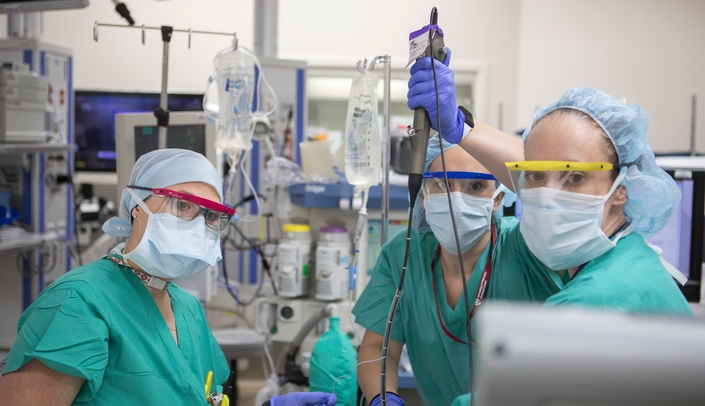Editor's Note: To celebrate the American Society of Anesthesiologist's Physician Anesthesiologist Week, January 26 – February 1, we will examine the recent leadership of our physicians to shape patient care, education and research in our institution.
Creation of the multispecialty division resulted in the official sectioning of the department into six clinical divisions at the start of academic year 2019-2020.
Creation of the multispecialty division completes the reorganization of the clinical programs to align with the overarching departmental strategic plan for continued clinical growth and academic success. Robert Lobato, M.D., was announced as the multispecialty division chief in Spring of 2019.
“It was a fun and smooth transition for me to join the institution, everyone was so collaborative and collegial,” Dr. Lobato said. “We have a wonderful group of very committed physicians and CRNAs that are focused on clinical care and dedicated to resident education.”
The multispecialty division encompasses partnerships with so many varying surgical services, it essentially becomes a catch-all division, says Dr. Lobato. The division is split into sections to demarcate areas of clinical and scholarly expertise. Each section has a voluntary leader, or section head, that serves in an administrative role to facilitate partnerships with individual surgical services, to develop evidence-based clinical care pathways, and to coordinate educational programs.
Most physicians in the multispecialty division also have primary or secondary responsibilities in other sections and divisions. General anesthesiologists who are new to the department often manage a broad variety of cases. The formation of clinical sections creates mentorship opportunities for physician growth should they choose to develop expertise in a subspecialty section or division.
Residents and fellows will also begin dedicated clinical rotations in some sections of the multispecialty division, such as thoracic anesthesiology, vascular anesthesiology, and neuroanesthesiology. While previous trainees received the same overall clinical experience, it was distributed throughout their residency program. Moving forward, department leaders hope a concentrated education on these advanced management topics will give trainees a more comprehensive understanding of each subspecialty’s anesthetic management.
As the division progresses, Dr. Lobato hopes to see the division develop robust clinical pathways utilizing evidence-based best practices that reduce the variability between anesthesiologists and anesthesia care teams. Additionally, he hopes to jumpstart the academic mission of the department by engaging faculty who are already pursuing innovation to also tackle research.
“Almost everybody in the division is already engaged in innovation, whether it’s patient care, or advancing resident education,” Dr. Lobato said. “They’re finding new and interesting ways to do all of those things. Research is adding the extra 10% that involves quantifying that innovation and publishing it.”
